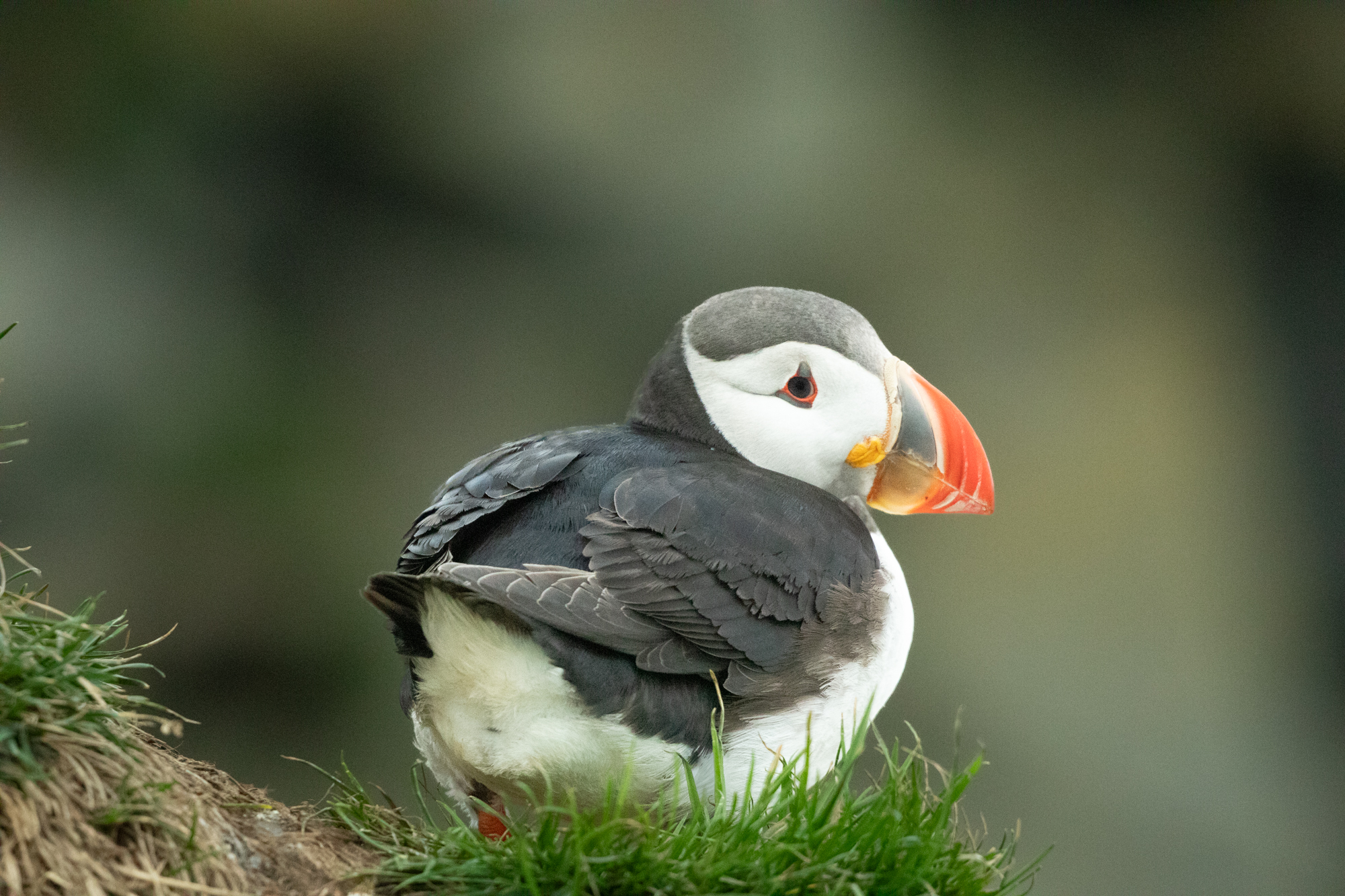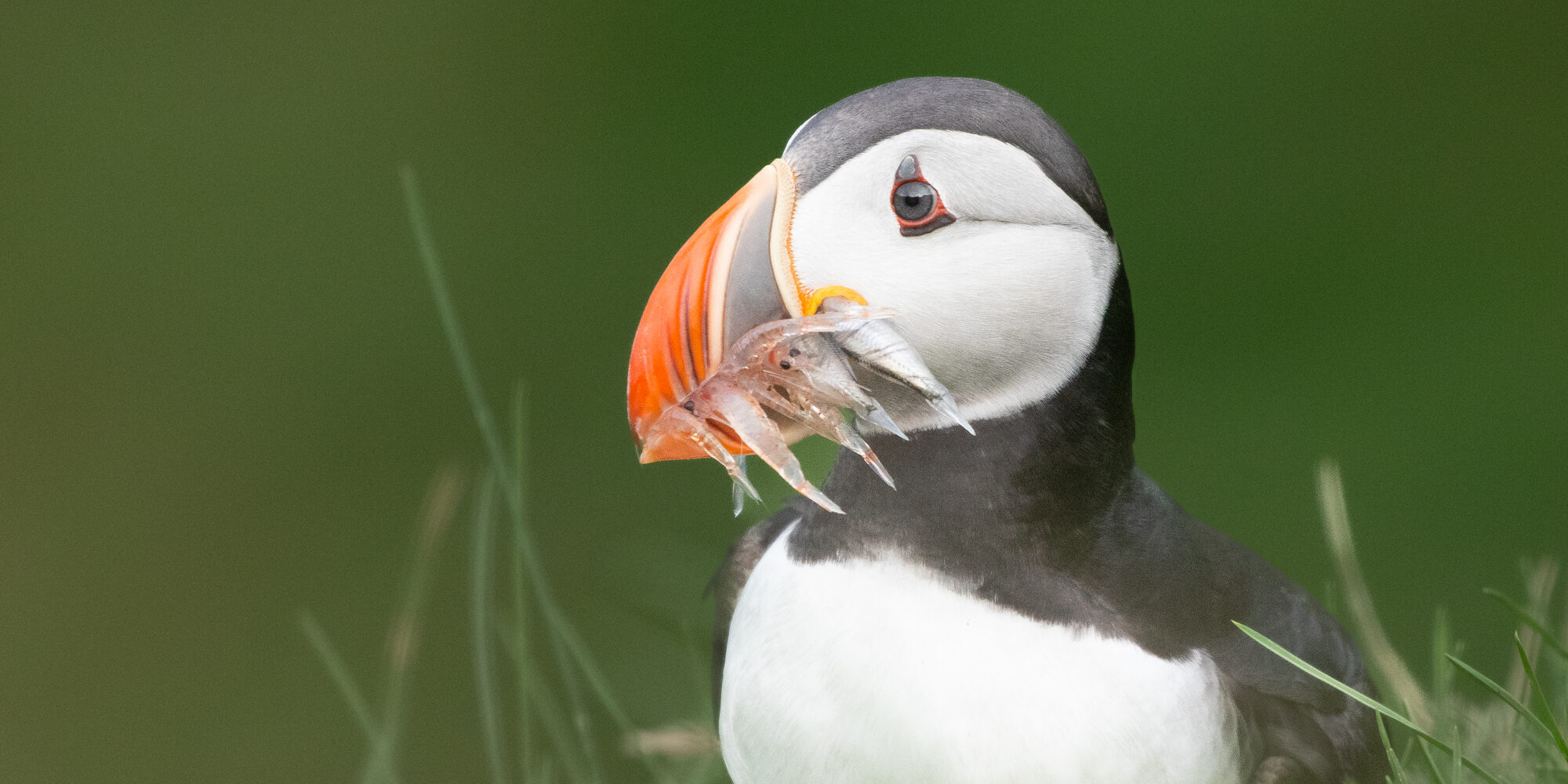What you seek is seeking you.
-Rumi
Birds and bird photography has been a passion of mine since I was a little girl. One of my first memories was grabbing my old manual Canon and running down to the feeder in upstate New York to photograph chickadees. They often say what brings us joy when we are children always finds us again, and that has been the case in my life.
Nature and photographing nature is far more than a hobby for me, but a form of therapy. I enjoy doing it and I believe when we enjoy something, the. love we have for it will show in the work. I hope this is the case for the photos I will share with you on this blog.
I just completed my first week of a 35-day camper van adventure around Iceland, where I finally got to photograph puffins! I wasn’t sure if I would find any. Puffin season runs from May to early August, when their breeding season ends. I planned the trip to overlap both puffin season and aurora season, hoping for the opportunity to do both! What I received from the puffins was far more than photographs; it was memories I will never forget.
I was fortunate enough to have thousands of them all to myself at Vestmannaeyjar (Westman Island) and even extended the stay an extra night to spend more time photographing them. That is the beauty of being here for so long; it allows for maximum flexibility, which is nice considering how fickle the Icelandic weather can be.
Little did I know that the puffins, much like my beloved Icelandic horse, would teach me some things; one is to slow down a bit. For all of this, they hold a special place in my heart.
It was love at first sight when I spotted a puffin in Iceland on my first trip in July of 2021. It was at Dyrahoey on the south coast, a black sand beach with interesting rock formations and, you guessed it, a puffin colony.
At that time, I did not know how to use my new DSLR camera. I was raised in the world of darkroom photography and manual settings. Digital was not even a thought in my mind. So, when I purchased my new Canon DSLR setup in 2021, my pictures were horrible, and I needed to figure out how to improve them.
This was a day of firsts, one of which was my first encounter with the unrelenting Icelandic wind. I can recall having to hold onto the guard chain as I navigated the steep, narrow path down the coastline.
It is obvious at first sight because they are called “the clowns of the sea.” Besides a bright orange beak and patterns around their eyes, their movements are whimsical and even comical at times. Watching them is entertaining!
I have returned to Iceland many times since then, but it was always when puffins were out to sea. Being that it was early August, I knew I had a chance, so I planned my first week around the puffins, a stop at Dyrlohaey, and a ferry to Vestmannaeyjar.
Iceland is known for its weather—all of it. You name it, Iceland has it, and sometimes all of it in one day. Many of my friends were lamenting the unusually wet and dreary days this summer, and on my arrival for this trip, I sensed my luck with the sun had run out.
On day two, I decided to venture from Hvolsvollur to Dylarhoey around “sunset,” hoping to see the puffins. Besides a few, the sun had been mostly absent since I arrived, besides a few fleeting moments. Then came the wind, rain, and more wind.
My first drive to Dyrlohaey was the same. By the time I got close to Vik, the drive became treacherous. A warning for gale-force winds was issued on Vedur and I knew I would have to turn around. My heart sank as I drove the hour back to the hostel and considered rising early in the morning to try again.
I awoke at 3 a.m. the following day and began the drive around 430. The sun peaked above the glaciers, and the wind was calm. Then, as if I had entered some weather portal near Skogar, the wind and rain picked up again. When I reached Dyrholaey, it was shrouded in a thick fog, concealing even the black sand beaches below the cliffsides.
I sat in my camper, procrastinating, dreading the cold and the rain, wondering how I could see a puffin when I could barely see my hand in front of my face.
After outfitting my camera with its jacket, I made my way down the path to the cliffsides. The mist lifted just enough to reveal one lonely puffin perched on the cliffside, looking out as if he was terribly worried about something.
Me too puffin, me too.
The lighting was horrendous, and the conditions were even worse. The wind was relentless and I struggled to keep my camera steady as I took my first shot.
Now, if you have ever photographed a black-and-white bird, you understand what a challenge this can be. Put it against a blown-out fog background, and it’s a photographer’s worst nightmare.
I struggled at first to get the correct settings. Too much light, too little, and not enough detail blew out my ISO. Then I moved. Putting the puffin against the dark green of the cliffs was enough to gain the right exposure.
I must have taken a hundred shots before I took this one, and when I did, I squealed with excitement because I knew I had got what I was looking for.
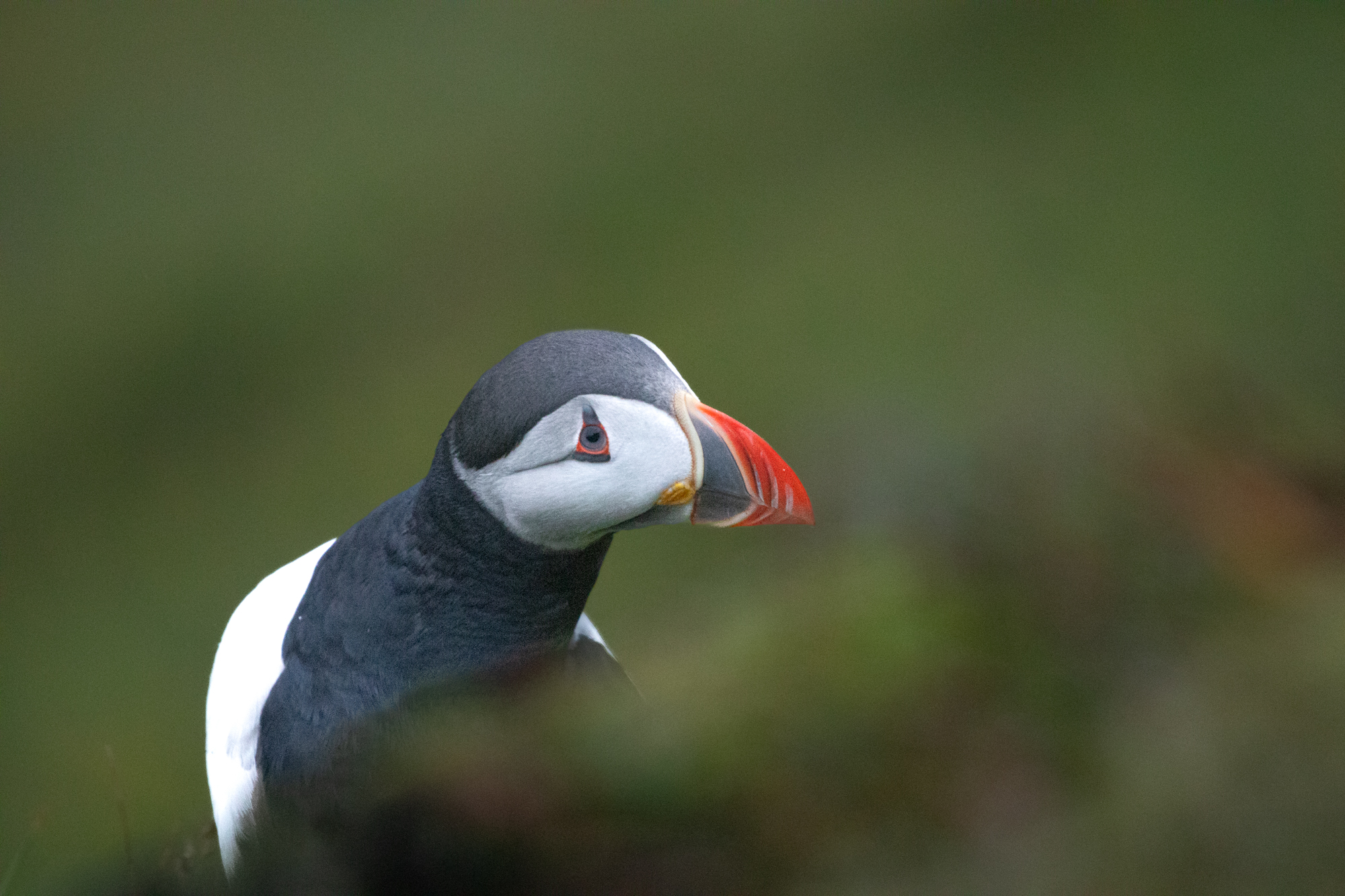
When I take a photo of a bird, I like to tell a story with it, especially puffins whose personalities are as big as their charm. I loved how this one is “posing” for the camera as if he was looking over his shoulder to say hello. I beamed with excitement when I saw the photo in my viewfinder.
I stayed for a while, eventually moving down to the beach, where there were hundreds of puffins and many tourists. I was able to get closer, but I enjoyed the one-on-one time I had with my lonely puffin.
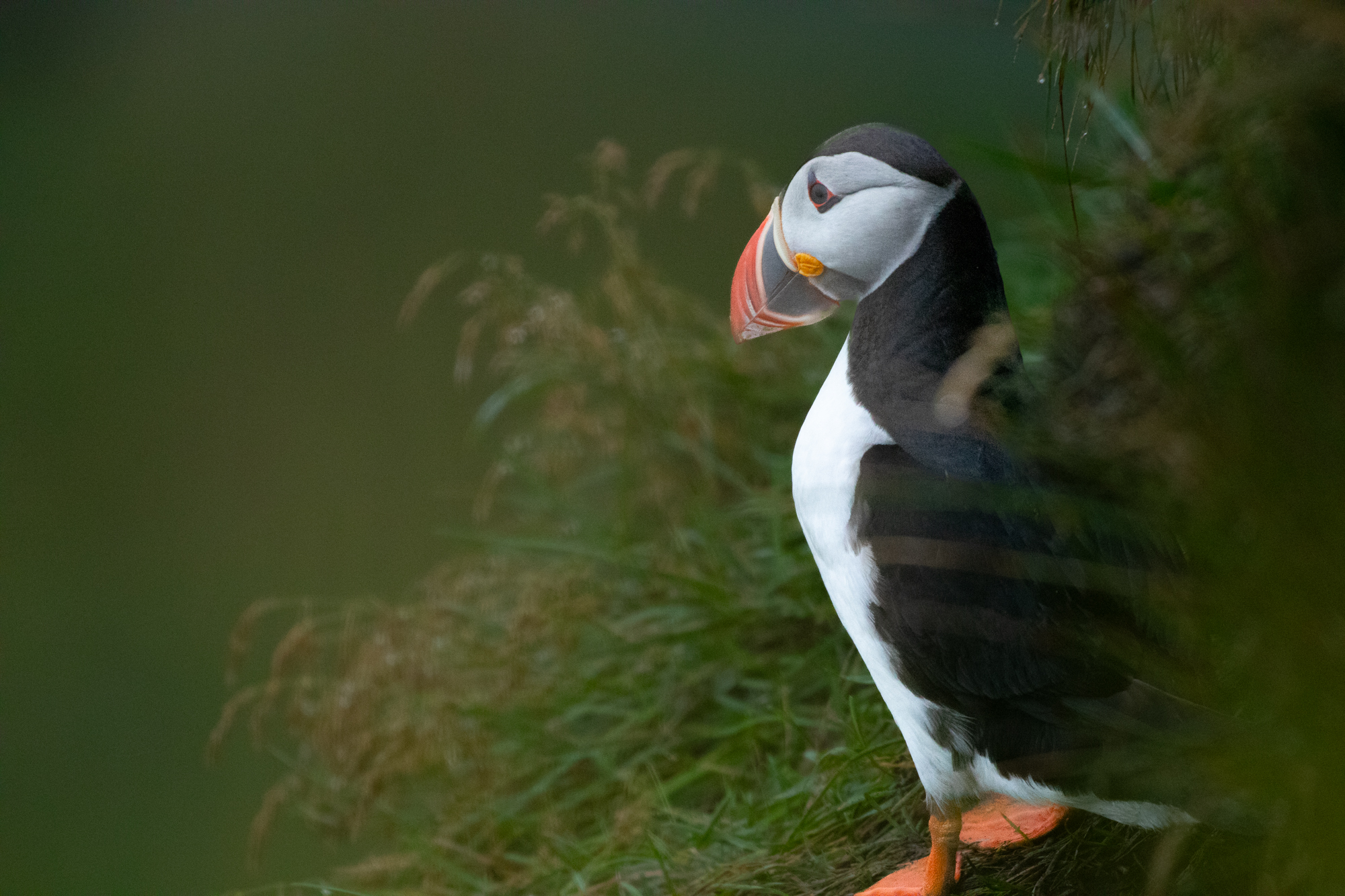
On my fourth day, I scheduled a sail to Vestmannaeyjar (Westmann Islands), a volcanic archipelago off Iceland’s south coast. You can access the Westmann Islands by ferry by booking a ticket here, and you even have the option to bring a car or camp as I did! I highly recommend this as part of your itinerary. It is scenic and interesting to see and off the beaten path of mainstay tourism. There are volcanoes to hike, rib boat tours, several museums, and of course, a puffin colony.
On the first day, I found the puffins on the island’s southern tip, Storhofdi. I set out around golden hour and was greeted with perfect conditions. The walk from the car park to the colony alone was one of my most memorable experiences in Iceland.
Fields of green grass swayed in the breeze, and the grazing sheep looked up at me impassively, only to return to their feasting. The sun was low, casting a golden hue across the island, and it was so quiet that all I could hear was the sheep chewing on the blades of grass. In the distance, the surrounding islands looped emerald, green in the ocean. It felt and looked like heaven.
I spent several hours photographing the puffins that night and was pleased to be able to get some close shots of them with their daily catches.
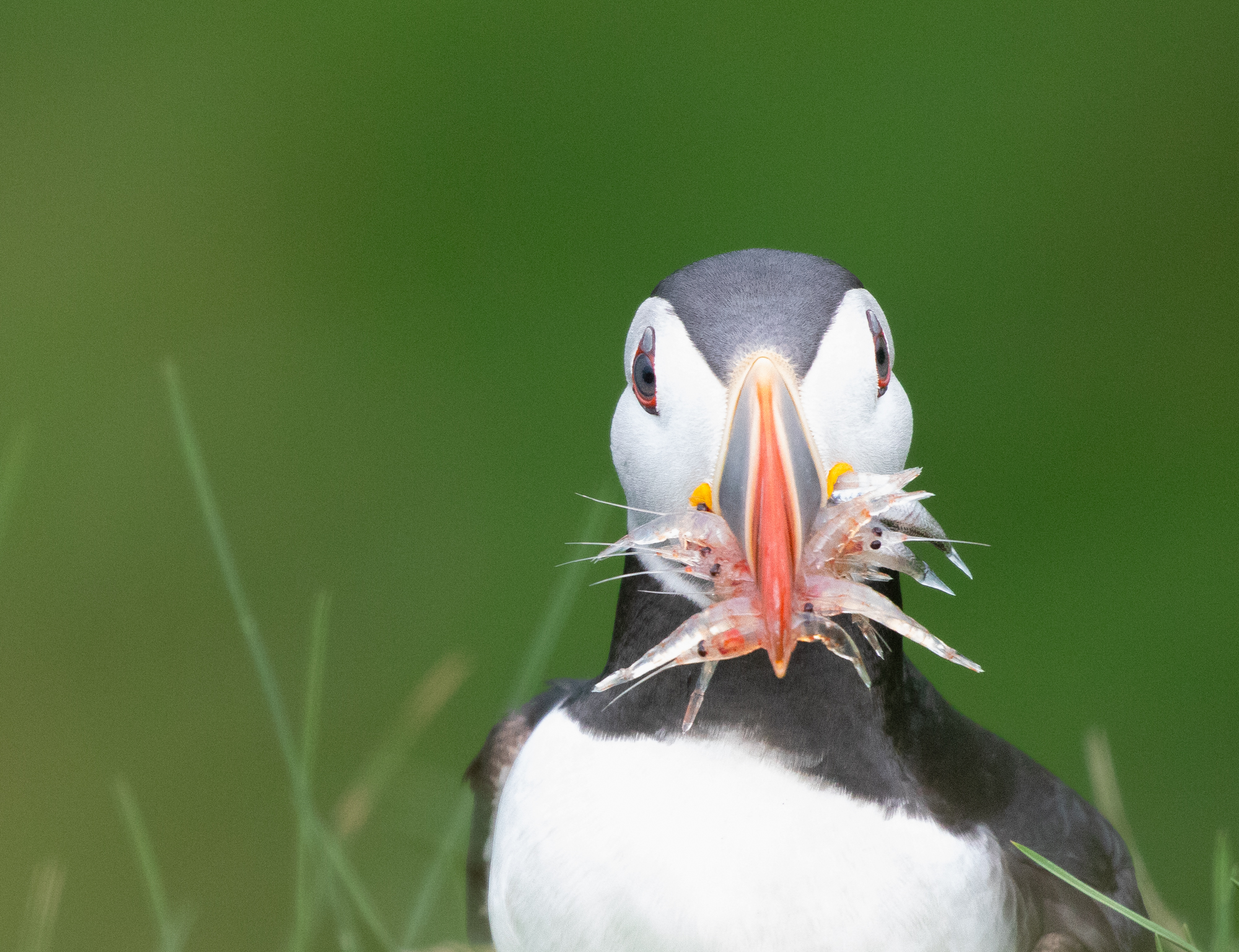
The next day was a rib boat tour where I could see even more wildlife such as Northern gannet, razorbills, and common murre. The following was a much needed visit with a good friend for a hike up Helgafell and some ice cream.
Due to perfect sunny conditions and mild temperatures, I extended my stay and returned to the puffin colony the following day. When the sun comes out in Iceland, you adjust your plans to take full advantage.
My objective: puffins in flight.
If you have ever photographed birds in flight, you may know how challenging this is, but what I learned that day was that patience is the key to photography and that if you must lay in sheep shit to get the shot, you do what you have to do.
I rose at 4 a.m., brewed coffee, packed the camper, and went to the colony. The sun was rising, so I positioned myself where the light would work with me and not against me. Photographing black-and-white birds is a challenge with the light, and now add movement, making it even more difficult.
I found a spot beside a small grassy mound to blend in, only realizing later it was lined with sheep dung. I was grateful my campsite had a washing machine. After an hour of observing the flight patterns and adjusting settings, I was finally ready to shoot.
I must have taken hundreds of photographs, most of them blurred, but as I continued, I was able to begin tracking the puffins and understanding their flight height and pattern, and this was key.
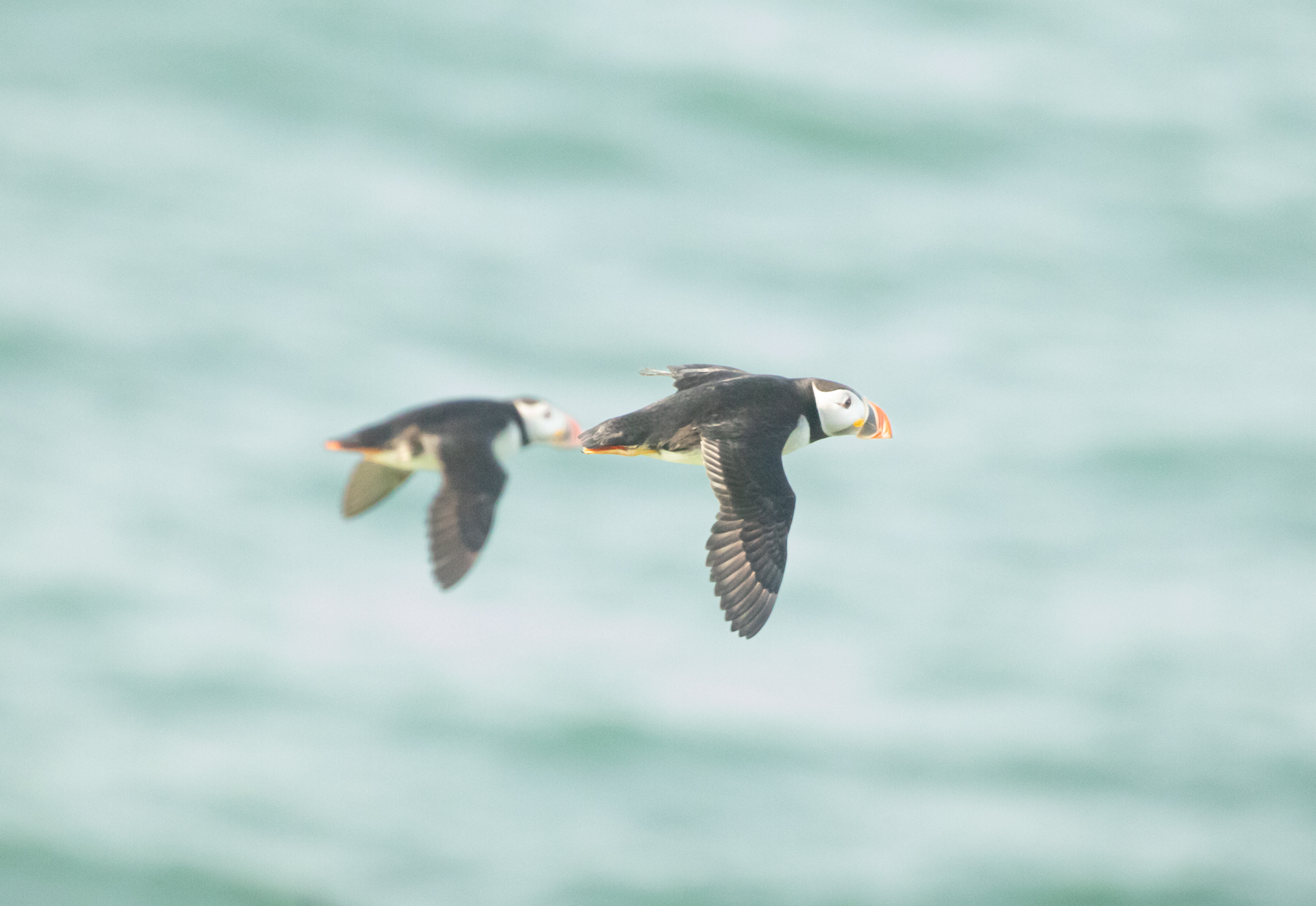
There was a moment when I stopped and put the camera down. It was as if I had become part of the landscape. There were hundreds of puffins around me, flying so close I could hear their wings beating. It was so magical, and I just sat there watching them for a while, musing over that unusual “low groan” sound they make from their dens.
It was a moment I wish I could hold onto forever, a simple one, just immersed in nature without a care in the world. The puffins went about their business, sometimes stopping as if to look straight into my camera for their portraits.
Eventually, all three camera batteries died, leaving me with nothing but my eyes. I lingered for a while, unable to pull myself away from them.
I was so pleased with the photograph that morning, but even more with my cherished time with the puffins and their colony.
If you can photograph puffins, do yourself a favor, put the camera down for a moment, and just be. You won’t regret it.
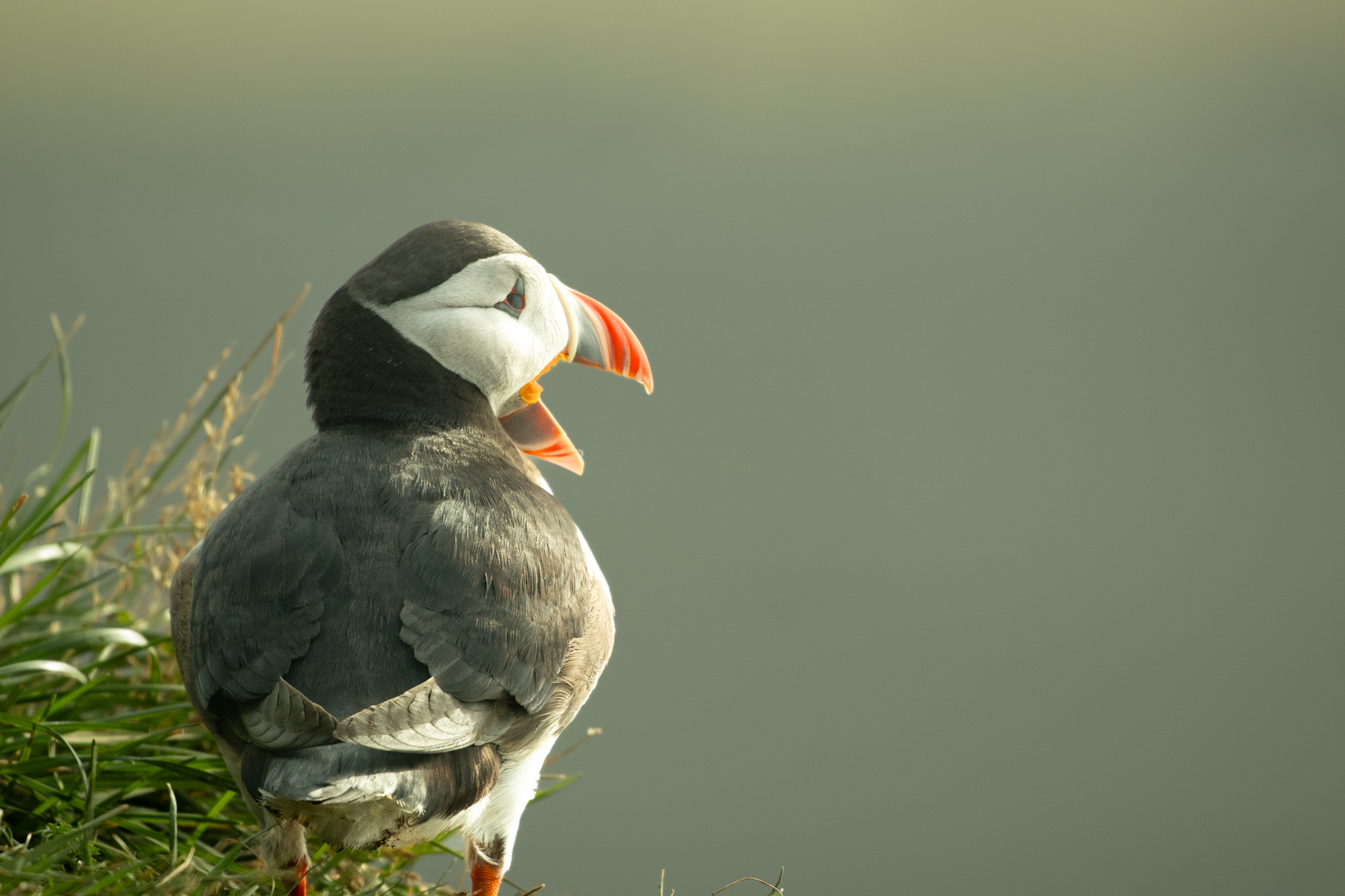
Puffin facts
Puffins spend most of the year out on the North Atlantic sea only to return to land from May to August for breeding season.
Puffins are loyal and take a mate for life. The male puffin will return to the nest ten days before the female to tidy it up! They return to the same nest every year!
Puffins dig a shallow burrow for their nest with their bill and feet. The male is responsible for most of the escavating, however the female does help out with this too!
A pair of puffins will have just one puffling who they feed daily until the puffling is ready to head out to the sea on its own.
Puffins are social birds and live in colonies. The largest documented colony is in Vestmannaeyjar, Iceland with an average of 4 million individual birds!
Puffins eat mostly small fish such as sand eels, sprat, herring, hake and cod.
Tips for photographing puffins
- Puffins come ashore to breed in Iceland from May to mid-August. Your best bet is to try to catch them in the morning or the evening. During the day, they hunt to bring food back for their babies.
- Puffins are curious birds and not afraid of people, making them fun to photograph!
- Some of the best places to photograph puffins in Iceland are:
Dyrlahoey (south)
Latraberg ( west fjords)
Vestmannaeyjar (south) Borgafjordur Eystri (East Fjords)
Shutter speed and settings. As with any bird photography, you want to use a high shutter speed (1000 +) depending on lighting and whether the bird is still or moving. I kept mine hovering between 1000- 1250, but it was tough due to the low light situation, so I kept my ISO on auto to compensate, sometimes reaching 5400.
- I kept the aperture at 5.6. For birds in flight, crank the shutter speed as high as possible and use a focus point setting on your camera. This is a little tricky, but with practice, you will get used to it and will be nailing those flight photos!
- Proper exposure: Exposure composition is key when it comes to birds with black-and-white feathers because you want to capture the details of the bird. I recommend erring on the side of overexposure more than underexposure. When you overexpose, you capture the details and can darken them later in Lightroom or Adobe. Use your camera’s histogram and understand the direction of the sun setting and rising to where you are. Adjust your position if need be and experiment! Aim to expose the bird’s face towards the light, but not so much where the whites get blown out.
- Know your camera’s capabilities: become familiar with what it handle, especially how hard you can push your ISO before your picture becomes mushy. I had no idea how terrible the tracking feature was on my Canon EOS until a friend advised me to shut it off. That is when the focus became much easier!
- Patience. I can’t stress this enough. There was a time during the shoot when I was going to leave. I felt satisfied with the photos but wanted more. I was hungry, and my hands were cold, but I decided to stay, and it paid off. I spent four hours there and went through all my camera batteries, and I might have stayed longer if I had more!
- Bring extra gear. Pack extra memory cards and camera batteries with you. Trust me on this! If you can carry a portable battery charger, that would be even better!
- Enjoy the moment. Remember to put away the camera for a few moments and just be. Experiencing the magic of nature outside of the lens is just lovely!
Good luck!
